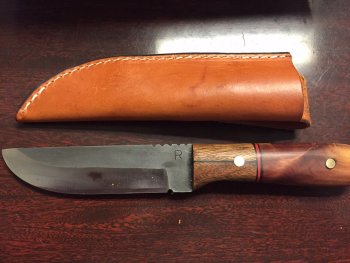John Wilson
Well-Known Member
Just like belts, the handle has to be figured into the sale price. That means exactly what Justin and others have said- you need to buy wood in the price range that makes sense for the knife. Back when I was selling $150 knives I was super frugal when buying handle material because the handle is already the most expensive part of the knife. A very nice finish on cheap wood looks a lot better than a poor finish on anything, as Ted said.
The wood has to make me money. I now offer exotic handle materials as an optional up charge. Believe it or not, that has been a really good decision because more than half of my customers go for the higher priced option. That’s one benefit of making to order. I don’t have a bunch of finished knives waiting to sell to see if i get my money back on the exotic materials.
The wood has to make me money. I now offer exotic handle materials as an optional up charge. Believe it or not, that has been a really good decision because more than half of my customers go for the higher priced option. That’s one benefit of making to order. I don’t have a bunch of finished knives waiting to sell to see if i get my money back on the exotic materials.


